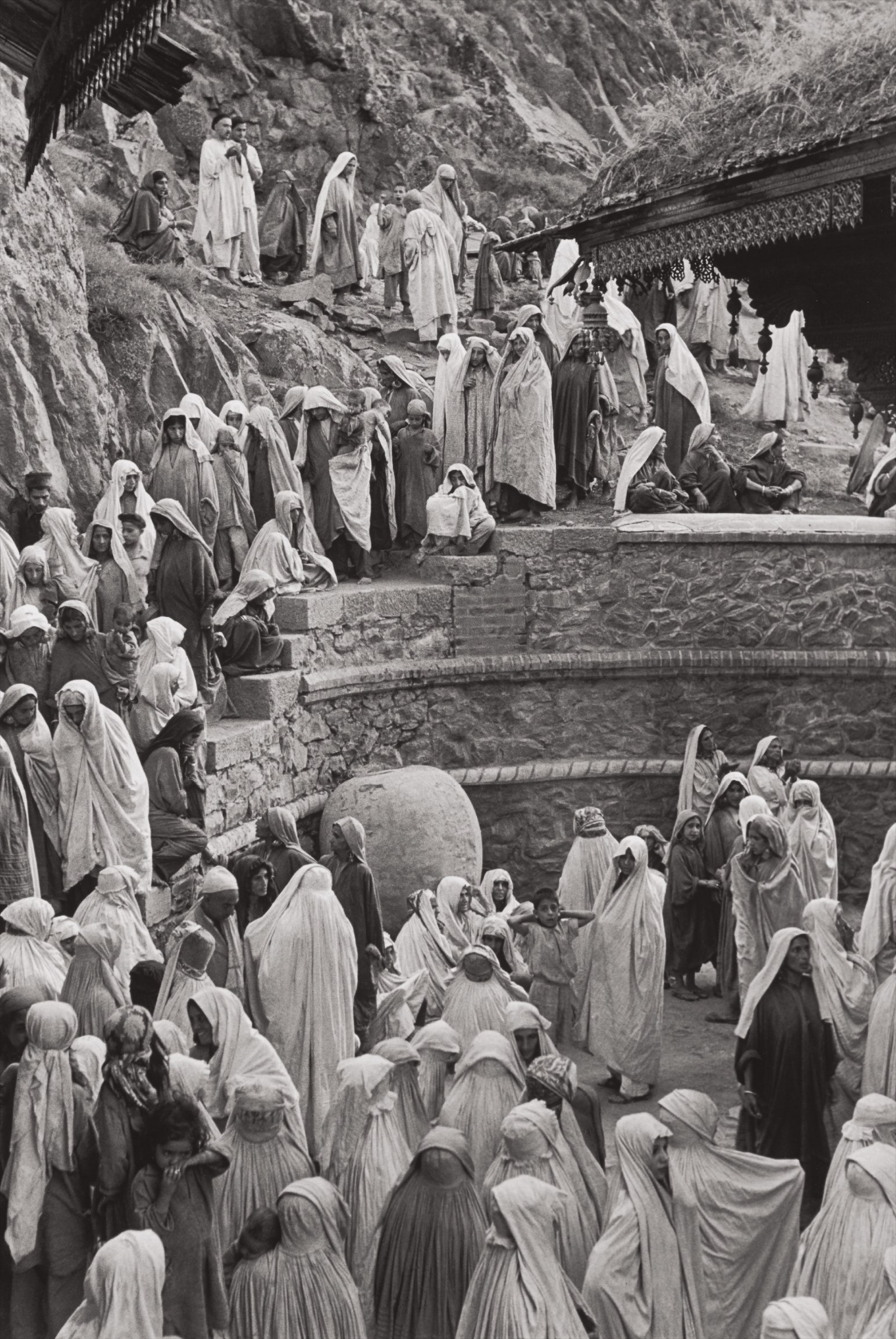

79
Henri Cartier-Bresson
Women at the Mahdum Shah Ziarat mosque, Srinagar, Kashmir
Full-Cataloguing
Most notably, in January 1948, Cartier-Bresson met with Mahatma Gandhi and documented the ceremonial breaking of a six day fast that Gandhi undertook as a call to restore peace. Only ninety minutes after their meeting on January 30, Gandhi was assassinated, and Cartier-Bresson, with his Leica camera, became a witness to history, capturing the immediate sorrow and subsequent proceedings for Gandhi’s cremation and the scattering of his ashes. The nationwide mourning is evocatively rendered in a depiction of Gandhi’s funeral pyre (lot 75). This coverage of Gandhi’s final days catapulted Cartier-Bresson’s status as a premier photojournalist, increasing demand for his pictures from leading publications including LIFE, Harper’s Bazaar, Now, and The New York Times Magazine. Over the course of the next 40 years, Cartier-Bresson continued to return to India, traveling there six times through 1987.
Henri Cartier-Bresson
French | B. 1908 D. 2004Candidly capturing fleeting moments of beauty among the seemingly ordinary happenings of daily life, Henri Cartier-Bresson's work is intuitive and observational. Initially influenced by the Surrealists' "aimless walks of discovery," he began shooting on his Leica while traveling through Europe in 1932, revealing the hidden drama and idiosyncrasy in the everyday and mundane. The hand-held Leica allowed him ease of movement while attracting minimal notice as he wandered in foreign lands, taking images that matched his bohemian spontaneity with his painterly sense of composition.
Cartier-Bresson did not plan or arrange his photographs. His practice was to release the shutter at the moment his instincts told him the scene before him was in perfect balance. This he later famously titled "the decisive moment" — a concept that would influence photographers throughout the twentieth century.